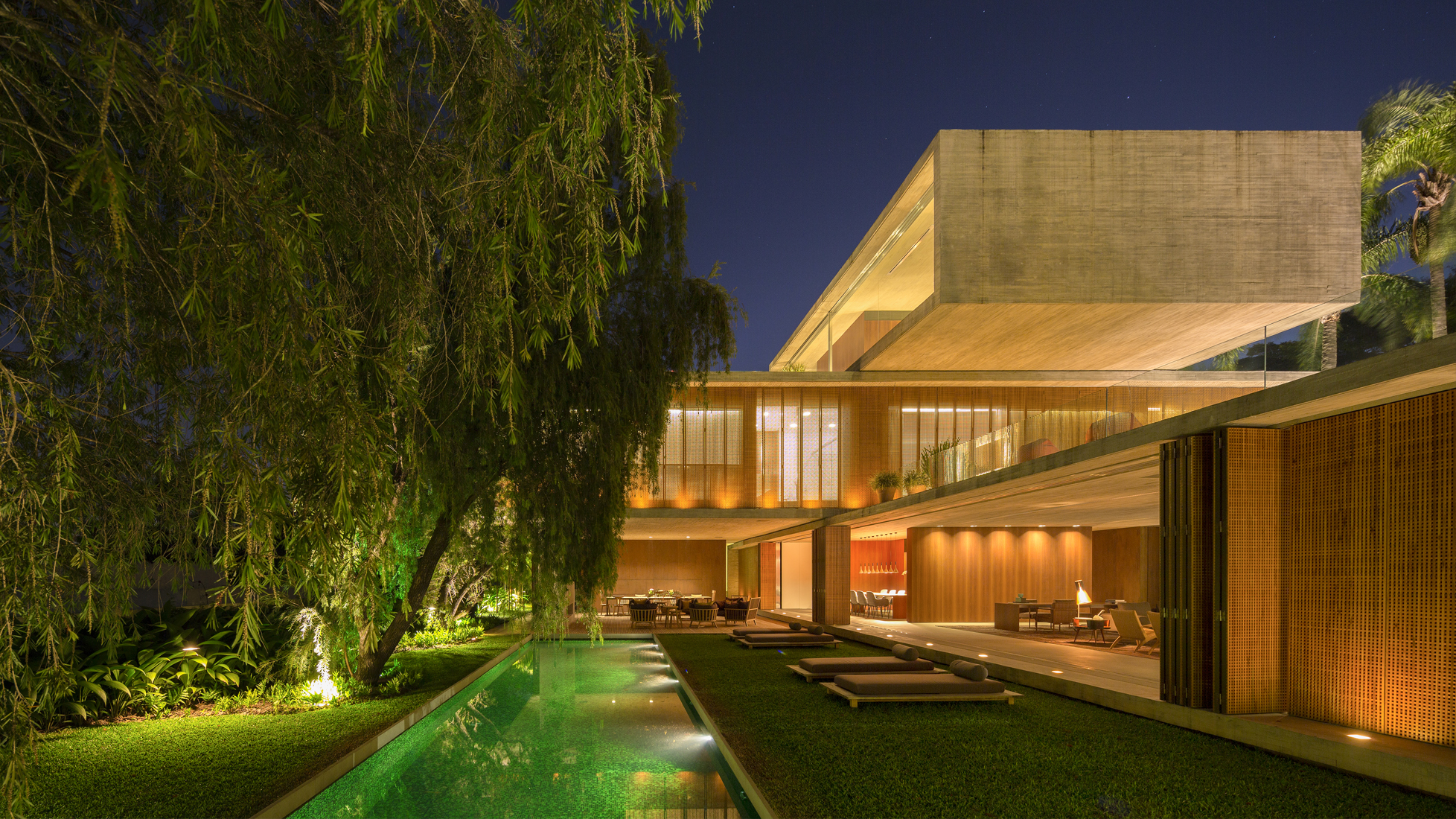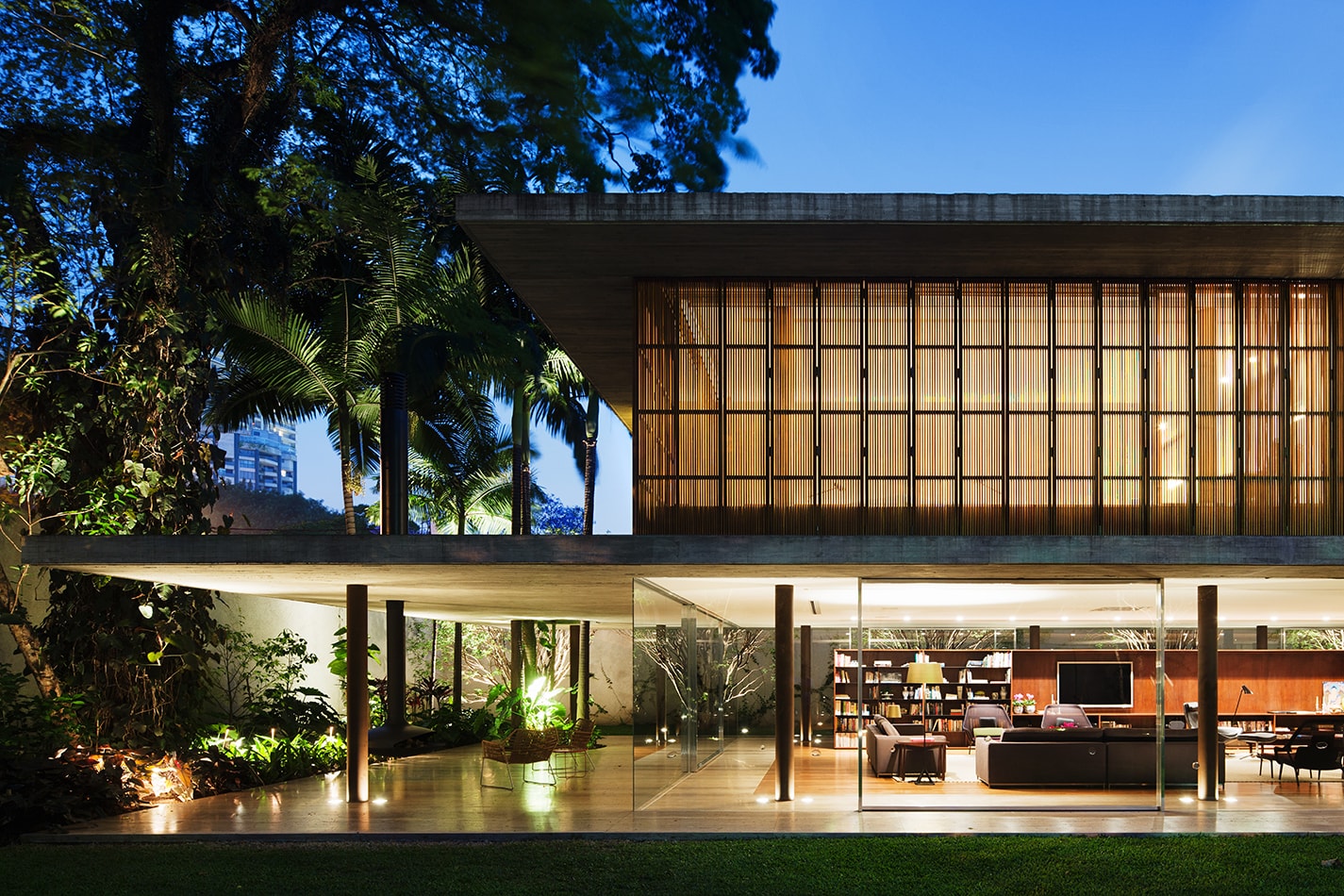
- Permbajtja
- prev
- next
- prev
- next
Marcio Kogan (born March 6, 1952, São Paulo) is a Brazilian architect and filmmaker best known for his work on private homes and retail design. He is the founding director and mentor of the Studio MK27’s team. Marcio graduated in 1976 from Mackenzie Presbyterian University School of Architecture and Urbanism. He is a visiting Professor at the Politecnico di Milano and at Escola da Cidade where he earned his master’s degree in Education, Society and Culture. Marcio is the author of all the projects of Studio Mk27 and an honorary member of the American Institute of Architects (AIA) and of the Councils of MUBE and MASP.
Considered one of the most important contemporary architects of Brazil, Marcio Kogan started his career as a filmmaker until the moment when he shot his first long feature in 1988, went bankrupt and had to content himself with architecture. However filmmaking influenced his architecture in many ways.
“The cinematographic proportions of the widescreen, the light, the constant emotion demanded by the movie, the teamwork, and perhaps many other things that have filtered into my soul.”
Kogan's projects are characterized by their high level of detail, formal simplicity, strong relations between inside and outside, focus on thermal comfort through passive sustainability, use of pure volumes, and the application of traditional elements such as mashrabiyas, as well as by functional internal plans. He favors the use of raw materials such as wood, concrete, and stone. Nearly all of his designs include references to Brazilian modern architecture, of which Kogan has long declared himself a great fan. His style is a reimagining of Brazilian modernism with extreme attention to detail, pure volumes, and a focus on formal simplicity. He is quite certain that a good cotoletta alla milanese is more important than architecture.
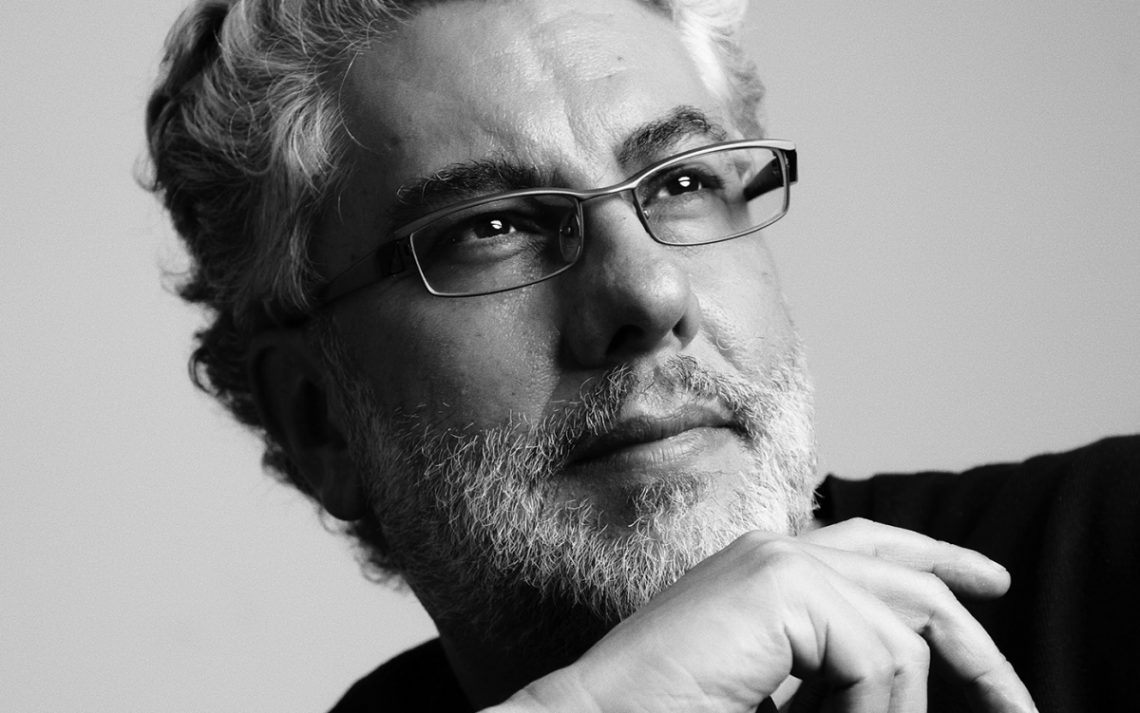
Toblerone House (2011) & P House (2012), São Paulo, Brazil
In mid-2000’s, studio mk27 main investigations focus on spatial compositions of boxes with linear horizontal windows and on the façade design regarding the depth of the openings in exterior plans. Volume design becomes an architectural thinking based on surfaces defining a formal radical purity for the exterior. The brises take up the entire façade, from top to bottom, and can be opened completely, while window frames and openings are concealed under this wooden skin.
Designed six months before Toblerone House (and concluded nine months later), P House project contradicts the premises of clarity and structural simplicity that have become relevant to the later projects of mk27, what explicit the transitory dimension of this period. While the Toblerone House initiates a new phase with an archetypical design around the subject of structural rationality, P House closes the previous period with a virtuous investigation about possibilities of complex structures with spans and cantilevers that ‘magically’ disappear in their various transitions.
P House
Toblerone House
Cube House (2012), São Paulo, Brazil
Cube House is a kind of antithesis to previous studio mk27 projects: instead of seeking beauty in light and svelte proportions, here the idea was to design using mass and weight. Furthermore, there is no “play” of volumes, but rather a concrete monolith with openings on the façades, as a result of material subtraction processes. Cube House creates a dialogue with the tradition of modern architecture in São Paulo – the brutalism of architects such as Paulo Mendes da Rocha and Vilanova Artigas. But the radical roughness of the 60’s decants here in soft spaces that prioritize, unlike the anteceding projects, criteria such as comfort, functionality and livability. The use of raw concrete and the architecture done by massive blocks on the outside remain.

Vertical Itaim (2014), São Paulo, Brazil
Perforated wooden shutters allow the residents of this São Paulo apartment building by Studio MK27 to control the levels of daylight in their living spaces. The Vertical Itaim building was designed for a site in the city's upmarket Chacara Itaim neighbourhood and contains 10 apartments. The timber shutters are covered in a grid of square holes that reference traditional Arabian mashrabiyas – carved latticework screens that were first used in Brazil by Portuguese settlers. "The wooden elements have perforated squared patterns and do not block the wind, just like the Arabian mashrabiyas," said the firm. "This solution results in very pleasant temperatures."

Jungle House (2015), Guarujá, São Paulo, Brazil
Jungle House site plan considered a previously-existing clearing in the center of the plot, located in the midst of Atlantic Rain Forest in Guarujá, on the coast of São Paulo, and it synthetizes an investigation about how to merge modern design and tropical vegetation. The landscape design recomposed native species and the terrain organically shaped the wooden deck in the first floor. The main volume rises from the ground and seems to be encrusted in the topography: the house projects outwards the mountains, apparently touching the ground on only two pillars.
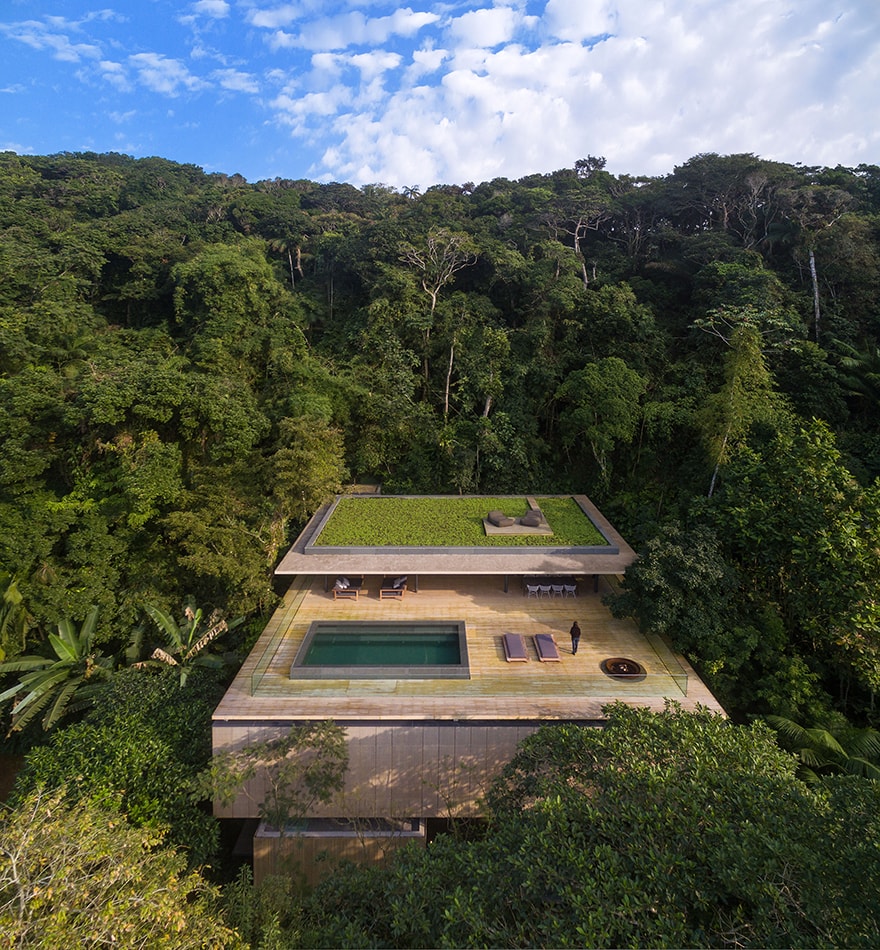
SP Penthouse (2015), São Paulo, Brazil
Floor-to-ceiling grids of wooden shelves cover double-height walls inside this luxurious apartment in São Paulo. The huge property is split over three floors that look out over the Brazilian city. Studio MK27 designed the interior for clients with an expansive collection of art and objects, so provided plenty of opportunities to put these on display. The most dramatic feature is in top-level library, where the high walls are covered top-to-bottom with a shelving grid.
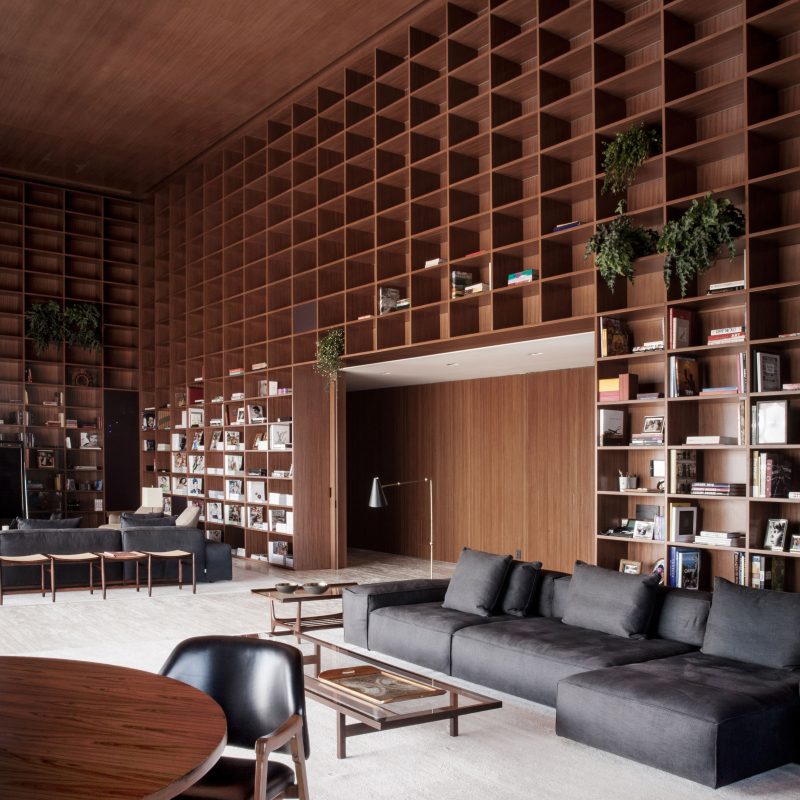
Planar House (2018), Porto Feliz, São Paulo, Brazil
Planar House is a radical exercise in horizontality, aspect commonly explored in the projects of the studio. Discreetly inserted in the highest point of the plot and favoring the existing topography, its presence is most strongly felt in the footprint rather than volumetrically. An extensive line in an open landscape. This type of insertion on the plot demanded care and attention with the design of the rooftop, which is the fifth facade of the building. This was an exercise in composition and selection of equipment to be placed there, such as solar panels and skylights. The green roof mimics the surrounding lawn as well as contributes to the thermal comfort in the house.

On the sand (2019), Trancoso, Bahia, Brazil
There are limits, such as the ocean, that appear to our eyes and soul like boundless openings. When confronted with these powerful natural elements, architecture must also open itself and project towards the limit. The house on the Sand, with its extraordinary view to the Atlantic Ocean in the northeast of Brazil, undertakes this venture. Immersed within the tropical woods that lead to the stunning beach of Itapororoca, the house expresses an authentic experimentation around the dissolution of architecture into its natural surroundings. The functional program is reduced to the bare minimum and the house lacks closed spaces that are not strictly necessary (corridors, entrance halls). The volumes rest upon an elongated rectangular wooden deck, slightly raised above the ground, next to each other yet slightly detached.
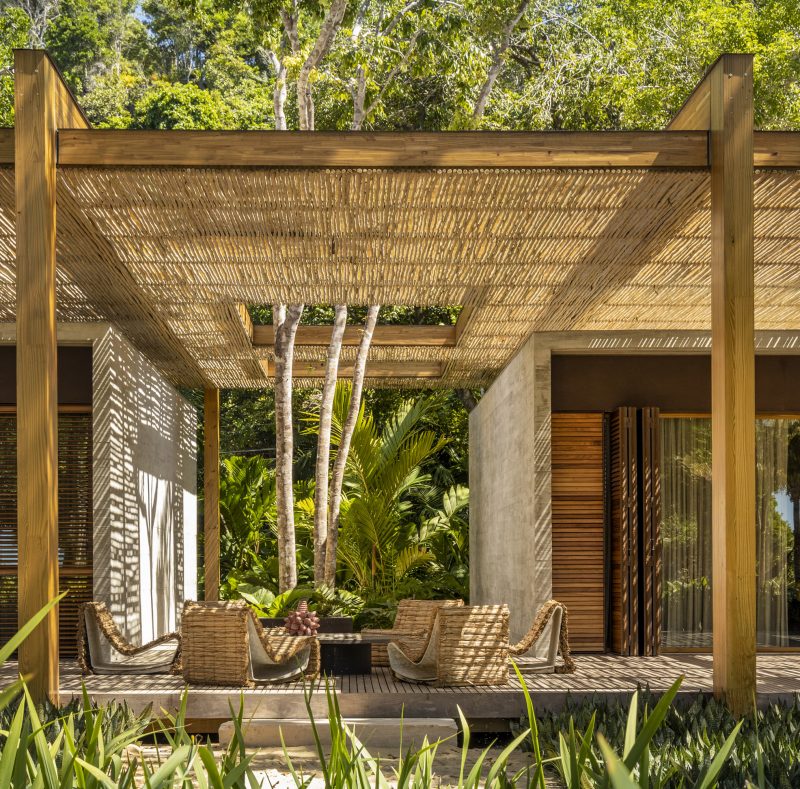
Pine Tree Drive House, Miami Beach
Studio MK27 has completed a luxurious Miami Beach residence, featuring a natural swimming pool where residents can swim with fish, and a bridge walkway that snakes over the top. It is accessed by the 60 metres wavy path, which ramps up from the road. Concrete stilts elevate the path above the water, while slats of teak form the balustrade. The two materials also feature throughout the property's interior. The walkway provides access to the upper level of the residence, where the main living space is located.

Source: studiomk27.com.br; dezeen.com
